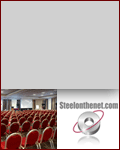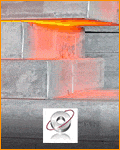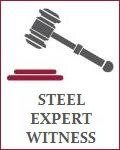Process, technology & energy use trends.

World Steel Industry Trends.
Global trends in steelmaking processes and energy use.
Steelmaking processes and technology
Steelmaking technology continues to evolve, but the changes are incremental rather than fundamental. The main processes of crude steel production have narrowed over many years and are now only electric steelmaking based on scrap and oxygen steelmaking based on molten pig iron.
Changes to those processes are also incremental, with small improvements in efficiency brought about by improvements in the design of equipment and higher qualities of electrodes, refractories and other inputs.
Changes to the required quality of steel and the situation of scrap supply have influenced the development of iron making technology. Falling scrap quality means that electric steelmakers producing high quality carbon steel (particularly flat products) need to add more primary iron.
Rising prices of coking coal and the environmental problems of coke production stimulated efforts to develop primary iron production without coke.
Direct-reduced iron has continued to grow and still has strong prospects in countries with low-cost natural gas. Coal-based iron making processes such as Corex, based on iron ore lump or pellets, have made only slow progress.
Other iron making processes based on coal and iron ore fines continue to be researched and promoted, but have made little impact at a global scale. Those alternative iron making processes now appear practical only in specific local circumstances (local availability of fine iron ore and non-coking coal, opportunities to use the by-product gas in other parts of the steel plant, shortage of local scrap).
Continuous casting has now become almost universal and there is only scope for further installation of this technology at old plants in the CIS and China. There is little major change in prospect in continuous casting of slabs, bloom or billets.
Direct strip casting (producing HR coil direct from molten steel) has been researched for at least 20 years. It has not proven commercially attractive at a large scale, but still remains a possibility to reduce costs of flat products in the long term. This process may initially be more favourable for the production of stainless steel than for large-scale carbon steel plants.
Other improvements to steel rolling technology have been small and do not seem likely to transform the industry in the next few years. New plants are therefore likely to continue to install proven technology and to achieve relatively quick construction and start-up of production.
EnergyFor the integrated process of steel production the main source of energy is coking coal, which is covered under raw materials above. Coking coal produces by-product energy gases that are used elsewhere in the plant instead of purchased natural gas or oil. Rolling mills and coating processes use electricity. This can also be generated at an integrated steel plant from the by-product energy gases (coke-oven and blast furnace gas) as well as from turbines driven by the blast of air (top gas) from the blast furnace. Large steel plants will therefore normally seek to install gas recovery and power generation equipment to minimise their external purchases of energy.
Gas is the major fuel for the production of DRI, where it is broken down ('reformed') into its constituent elements to provide carbon monoxide to reduce (removed oxygen from) the iron ore. The leading process of this type are Midrex and HYL. This process is economic only where the price of gas is relatively low, such as in countries of the Middle East.
Non-coking coal is also used directly as the reductant in the production of DRI by an alternative process, widely used in India. This coal-based process (SL/RN and similar processes) has a smaller scale than gas-based processes and suffers from relatively low-quality product because of contaminants from the coal.
Electric steel plants and independent rolling mills are significant consumers of electricity. In some cases an electric steel plant generates its own electricity from natural gas. This is normally at electric steel plants associated with DRI (direct-reduced iron) plants, where natural gas is a major input to the iron making process. Generally electric steel plants purchase electricity from a utility, so the price and reliability of electricity supply is a major location factor. Unreliable electricity supply, such as in India or in some parts of Africa, can lead steelmakers to install their own coal-fired electricity generation, but the scale of such generation can be uneconomically small. Alternatively in those countries it leads to very small electric furnaces (induction furnaces) which do not make a large, sudden demand on the local electricity supply, but are inefficient in scale. Consumption of electricity in the steel industry is far lower (less than one-tenth) per tonne of product, than in truly energy-intensive metal industries such as aluminium, magnesium or titanium.
To contact us about this steel industry technology trends page please email info@steelonthenet.com.





